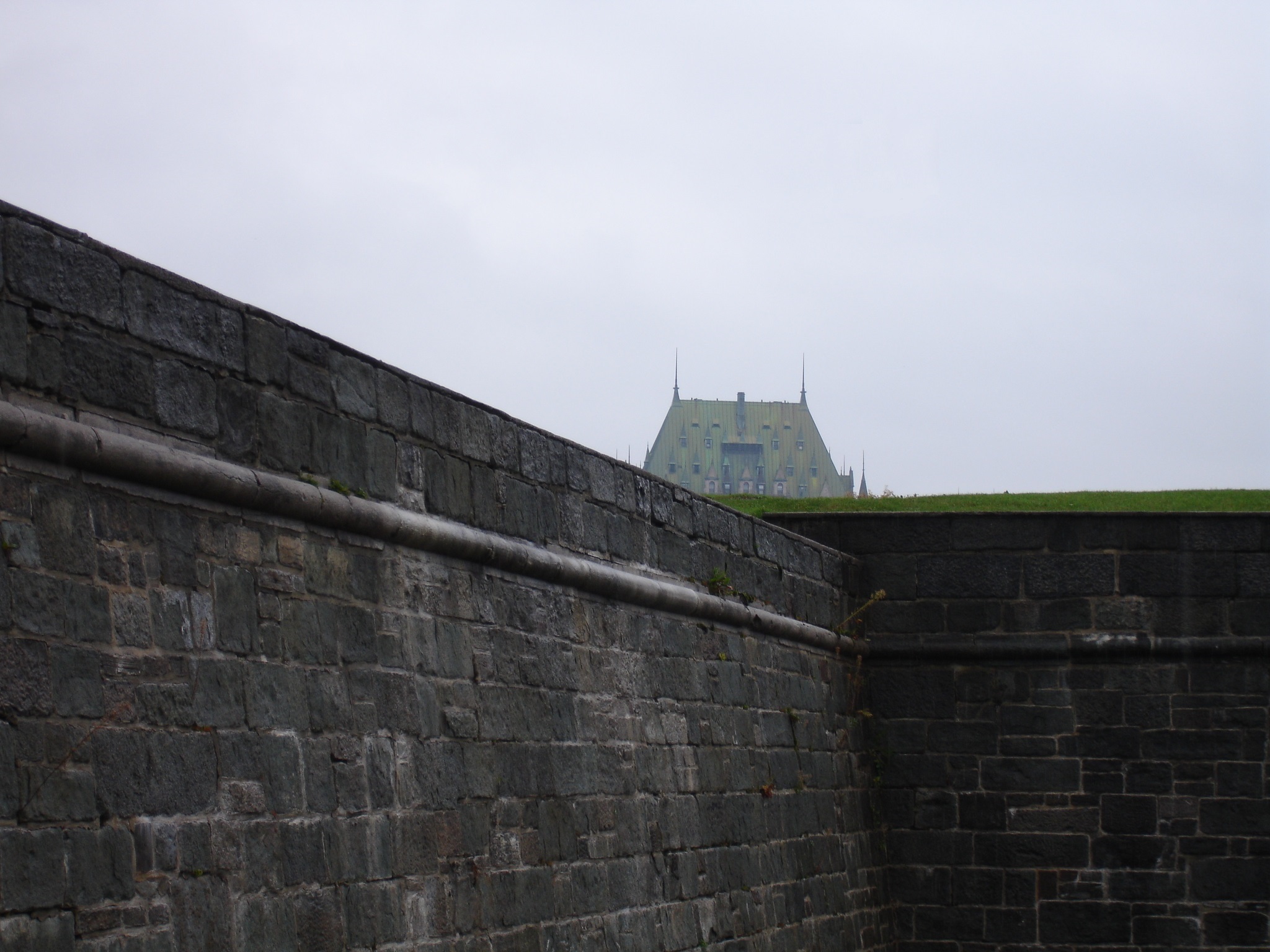A Beautiful Historic City
Quebec City is the capital city of the Canadian province of Quebec and is probably the most beautiful city in Canada
There are several highlights in Quebec City. The city has a lot of old architecture and is the only city in North America with a fortified city wall. You can spend hours having a stroll around the charming streets of Old Quebec and checking out the amazing Château Frontenac which is the biggest attraction in town. A fantastic aspect of Old Quebec is the division between Upper Town and Lower Town. Both districts are amazing in two uniquely different ways and the sharp boundary of a towering rock wall between the two is fascinating in itself.
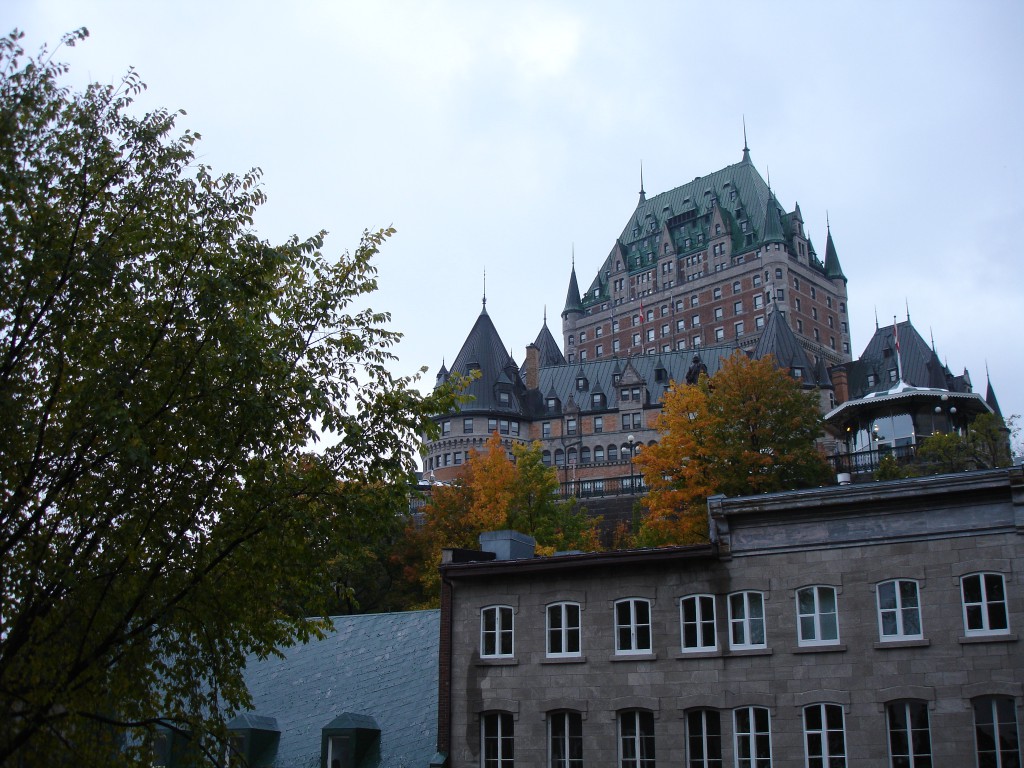
Early History: The French and the British…the Settlers and the Wars
Quebec City is one of the oldest European settlements in North America and was founded by French explorer and navigator Samuel de Champlain in 1608. It sparked a series of colonies along the St. Lawrence River known as “le Canada”. The first explorer on the St. Lawrence River, who claimed this name, was Jacques Cartier in 1535. Following the settlement “l’Acadie” (Acadia) was established, which is present day Nova Scotia. These two new colonies would form the dominion of New France.
Only a few days after Champlain’s arrival, he and his crew built a wooden fort known as the Habitat. This operated as a trading post and was placed on the spot of present day Lower Town in Old Quebec. There is still historic site of a part the Habitat present today.
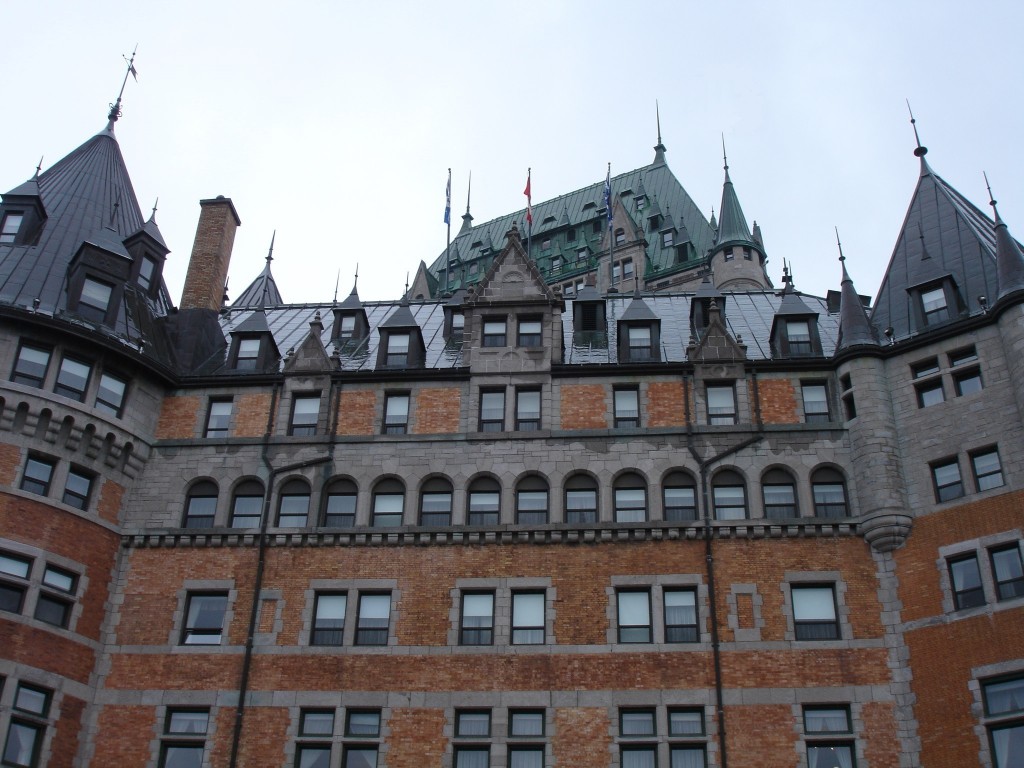
The maritime position of Quebec City and the presence of towering cliffs overlooking the St. Lawrence River was of great strategic importance in connection with trading with the Indians. The tribes in the area were the Innu and Algonquin. The word “Kebec” means “where the river narrows” in Algonquin.
During the 1600 and the early 1700s there were different conflicts between the French and the British such as the King Williams’s War in 1690 and the Queen Anne’s War in 1711. The Seven Years’ War had an impact on Quebec City in 1759 with the Battle of the Plains of Abraham which was due to British fear of French expansion into the Ohio Valley. The British wanted to defeat the French and remove New France from the map completely. This resulted in the city being permanently lost by the French.
The Battle of Quebec in 1775 was another pivotal event in the history of the city. It was an early stage of the American Revolutionary War and was a battle between the American Continental Army and the British defending Quebec City. It became the first major defeat for the Americans in the war.
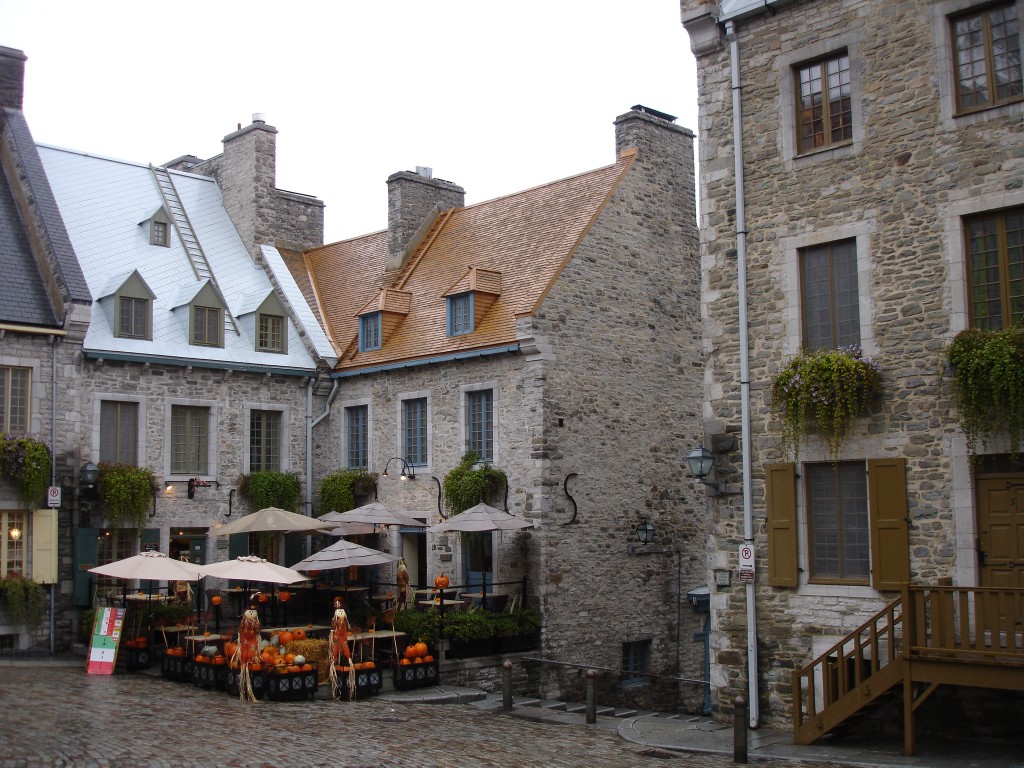
The Americans expected that the French speaking population would join the in the fight against the British in Quebec after the British had taken control of the province during the French and Indian War in 1760. But to the American’s surprise, many of the French speakers chose to remain neutral which was mainly due to the agreement the British had made with the Catholic Church in 1774.
This was known as the Quebec Act where the British gave the French Canadians religious and linguistic freedom and right to practice their Catholicism and speak French. Therefore as the Americans didn’t get any cooperation from the Canadians against the British, they decided to invade. The Americans were defeat which was mainly due to their inexperience with the extreme cold and retreated on 6 May 1776.
The Constitutional Act of 1719 divided Canada into an Upper English speaking colony and Lower French speaking colony. Quebec City was made the capital of the Lower region and enjoyed more freedom and self-rule because of this act. The industry would grow and during the 19th century it had become the third largest port city in North America. Lumber was the biggest business at this time and throughout most of the century. Due to the economic growth, Quebec City would welcome many new immigrants.
Visiting Quebec City
There are several ways of visiting Quebec City. You can concentrate solely on the city but flying in, but you could also do it in connection with a visit to Montreal. Here you could do an organised full day tour to Quebec City or you could hire a car and do several days which could also be a good option.
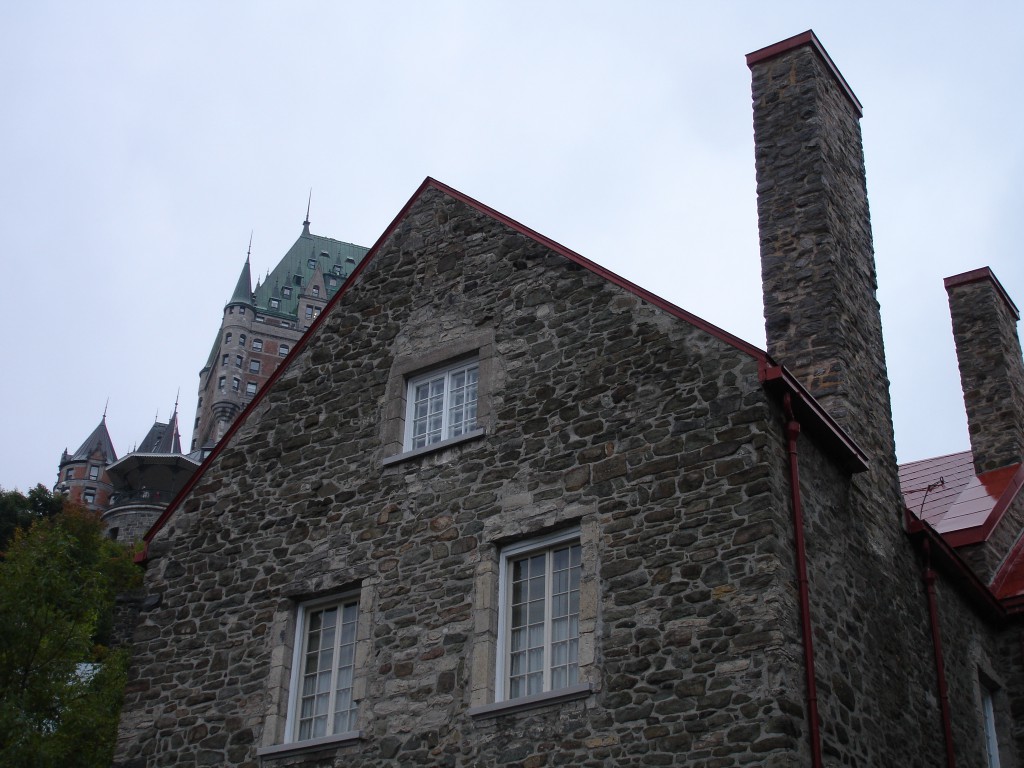
Quebec City is truly a marvellous city. It’s perfect for walking around and checking out all the old historic streets, alleys, structures and architecture. The setting of the city is quite fascinating as well with the main attraction of Old Quebec being split into the two different sections of Upper Town and Lower Town. As they are divided by a massive steep rock wall, it makes the two quite different also bearing in mind how they historically had different functions. Upper Town was the old fortification and Lower Town was the original location of Samuel de Champlain’s Habitat.
Upper Town is more spacious and you will finds broader streets and larger buildings. Lower Town is smaller and more cramped. Both sections of town have their unique charm which makes Quebec City such an intriguing place to visit.
The Canadian major cities are quite different. From Vancouver to Montreal…from Toronto to Quebec City and so on. Culturally there’s a pretty big difference between the west coast, the prairie provinces, the territories of the north, the east coast and Quebec. Even within Quebec you will experience the difference between Montreal and Quebec City and the further you get into the countryside of Quebec you will note how much they distinguish themselves from the big cites of the province.
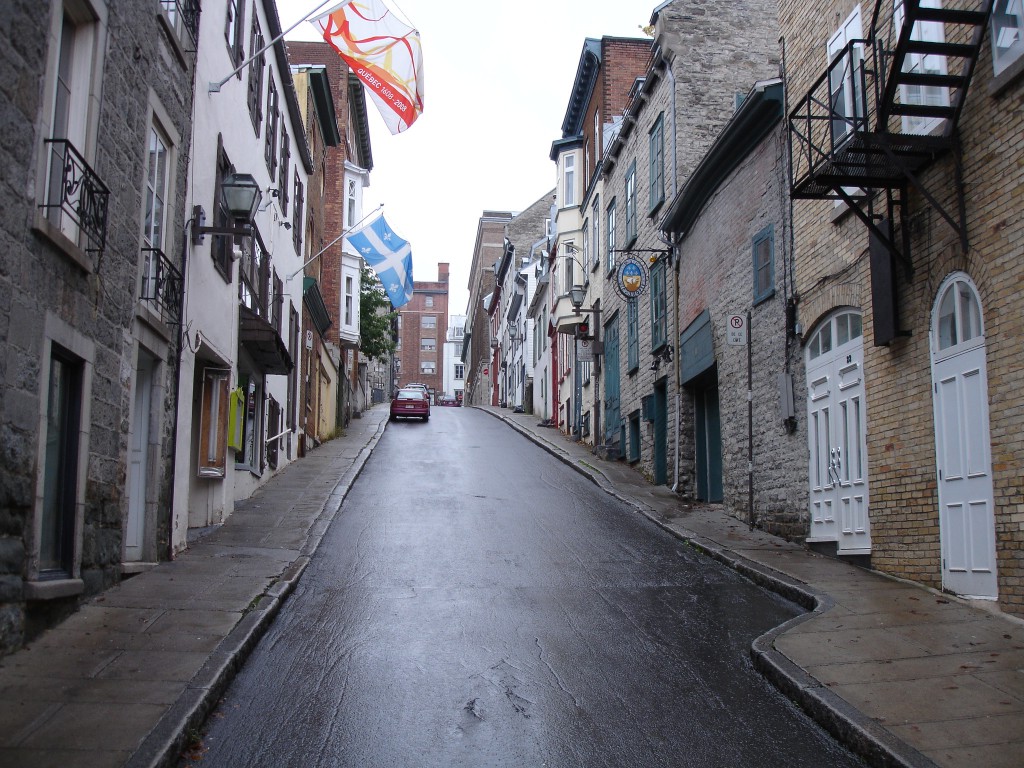
This is just a part of the charm of visiting Quebec City. Historically they are different to the English speaking part of Canada and if you are arriving directly from an English speaking province or territory of Canada you will notice. This is just one of the many amazing aspects of travelling around a massive country like Canada that you get to experience this diversity within one country
Fun Fact…the Language
As mentioned earlier, the province of Quebec is French speaking. Montreal is bi-lingual, in Quebec City you can get by speaking English mainly due to the many tourists passing through, but the further you get into the rural parts of province the more difficult it gets. There are areas where the people speak absolutely no English and only French. You will also find areas where the people just refuse to speak English.
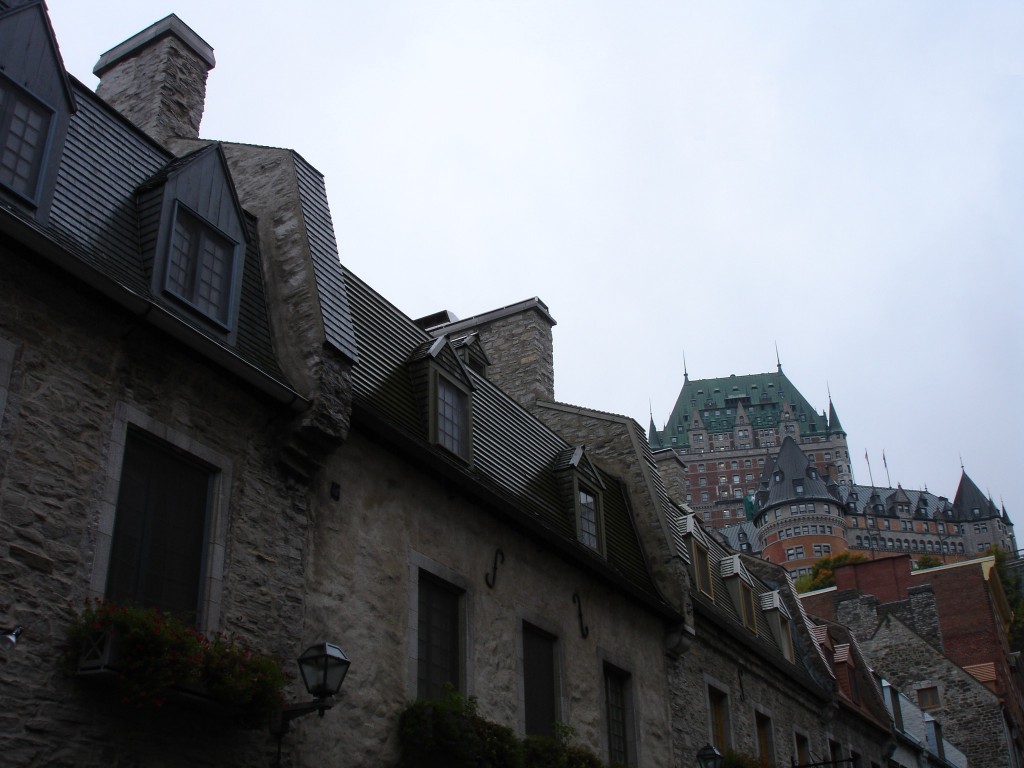
A good rule of thumb, which you don’t have to use in Montreal and Quebec City as they are so used to English speakers, but in the rural districts, it helps if you start a conversation with “parlez-vous anglais?”. This means “do you speak English?” in French. By doing this you are showing that you are trying to speak a bit of French. To them, you are being respectful towards them, their language and culture. French speakers are very proud of their language and heritage so this is an important factor to them.
The reason why French ended up being the language of Quebec in the end was because of the Catholic Church as they were in charge of the schools and here they made sure the children would be taught in French so it would end up becoming the native tongue.
The Magnificent Fortifications
Another cool feature in town is the magnificent fortified city wall surrounding the Upper Town of Old Quebec. You can easily spend several hours checking out this wall as it is pretty big and has several entrances and walkways. The fortifications are also known as the Ramparts of Quebec City which are the last remaining fortified city walls in North America north of Mexico. The British refortified the existing walls after they had taken over the city from the French after the Battle of the Plains of Abraham in 1759.
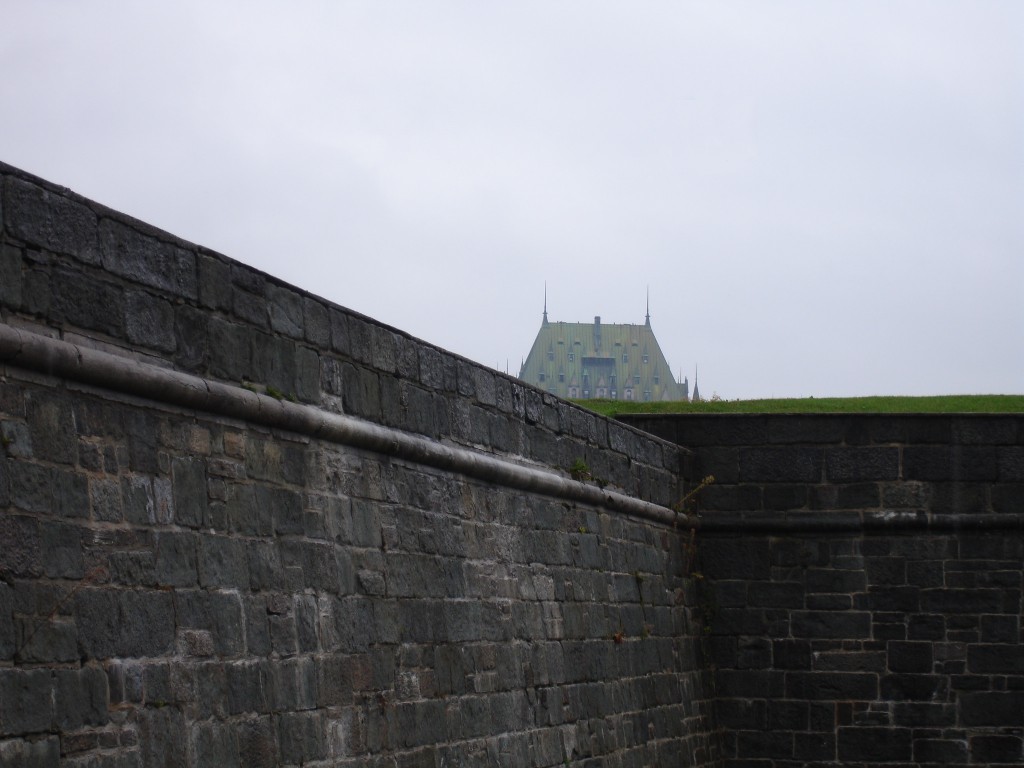
The ramparts have four remaining gates which are Porte St. Jean, Porte St. Louis, Porte Prescott and Porte Kent.
Porte St. Jean, based on La Rue St. Jean, dates back to 1694. It was demolished in 1791 due to poor condition, was rebuilt which lasted until 1865 when it was demolished yet again and rebuilt. The present gate is from 1939.
Porte St. Louis, located on La Rue St. Louis, also dates back to 1694 and was also demolished in 1791 due to its poor state. It was rebuilt, it was then restored in 1823 and eventually removed all together in 1871. In 1880 it was replaced by the wall seen today.
Porte Prescott was built in 1797 during the British reign and was named after the Governor General of Canada at the time called Robert Prescott. It was torn down in 1871 and the gate seen today constructed in 1983.
Porte Kent was erected in 1879 and was the last to be built. It never had a functional element in the fortification but an ornamental purpose. It was named after the Duke of Kent, the father of Queen Victoria, who had contributed financially to its construction
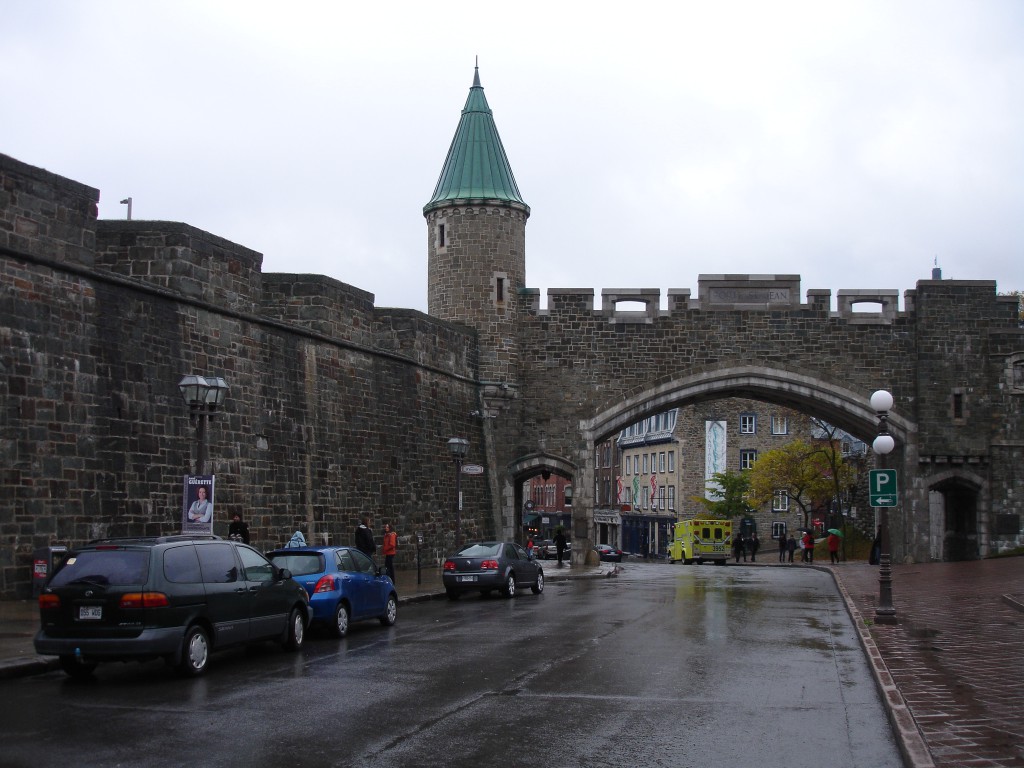
The fortifications were built between 1608 and 1871, based on a plateau overlooking the St. Lawrence and St. Charles Rivers. The construction was initiated by Samuel de Champlain in 1608 and the original construction was a makeshift works. It resembled a medieval castle and Champlain’s first fort, known as the Habitat, included a residence, a supply store and a redoubt with elevated walls. A redoubt is a fort system consisting of an enclosed defensive platform outside a lager fort. Throughout the 17th century the first structure was replaced with some very basic military works, including Fort St. Louis and Champlain’s second residence.
After the fall of Port Royal in Acadia in 1690, the French decided to properly fortify the city. This was done by creating the first enceinte, which is the main defensive enclosure of a fortification, and consisted of 11 redoubts. The steep cliffs of the Upper Town served as natural defences for two of the three sides, but the city was vulnerable on the west side as it faced the open countryside of the Plains of Abraham. This enceinte was modified in 1745 after the French lost in the battle in Louisbourg and a new enceinte was built to enclose the western front of the Upper Town.

Shortly after the British conquered Quebec City in 1759 they had to address a new defence strategy. They feared an attack from the French and an uprising from the French speaking population but they were struggling to raise funds to strengthen the defence of the city. The American Revolution years later sparked the construction of new fortifications. The British planned to improve the enceinte from 1745 to extend around the whole city. The final phase was completed between 1819 and 1832 and the completion of this citadel marked the height in the role of city as a fortress.
Construction of stand-alone forts were established on the shore in Lévis in 1965 was followed by the departure of the British Garrison in 1871. Several structures deteriorated and were eventually demolished but the main defences of the city were preserved due to Governor General Lord Dufferin who served from 1872 to 1878.
The Historic City Hall
The City Hall, known as Hôtel de Ville, is yet another beautiful piece of architecture which you have to check out. It’s a charming stone building and is located in the Upper Town of Old Quebec at 2 Rue des Jardins. It was completed in 1896 after a competition was launched to construct a new city hall. The architectural styles of Classical, Medieval and Château have been incorporated in the building. It is H-shaped with different heights due to being based on a hill so it slopes downward. It is the second permanent city hall with the first being the location of the British Major General William Dunn from 1842 to 1896.
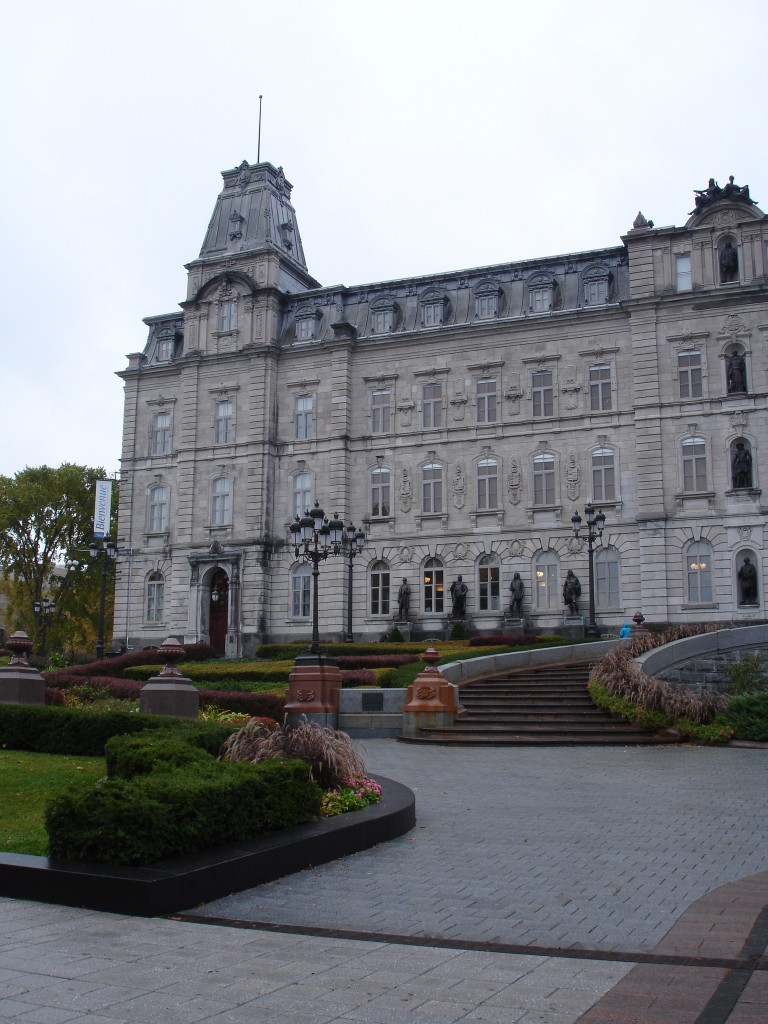
Maison Jacquet…the Oldest Building in Town
Another striking structure is the Maison Jacquet which houses the restaurant Aux Anciens Canadiens, located at 34 Rue St. Louis in Upper Town of Old Quebec. It is the oldest building in town and was constructed between 1675 and 1676. The site was granted to Francois Jacquet in 1674 by the neighbouring nuns of the Ursuline Convent. The property consists of two buildings, the easternmost is the oldest and dates back to the French colonial days. The author of the novel “Les Anciens Canadiens”, Philippe-Aubert de Gaspé resided in the Maison Jacquet from 1815 to 1824 and since 1966, the restaurant, which was named after his book, have been run from the premises.
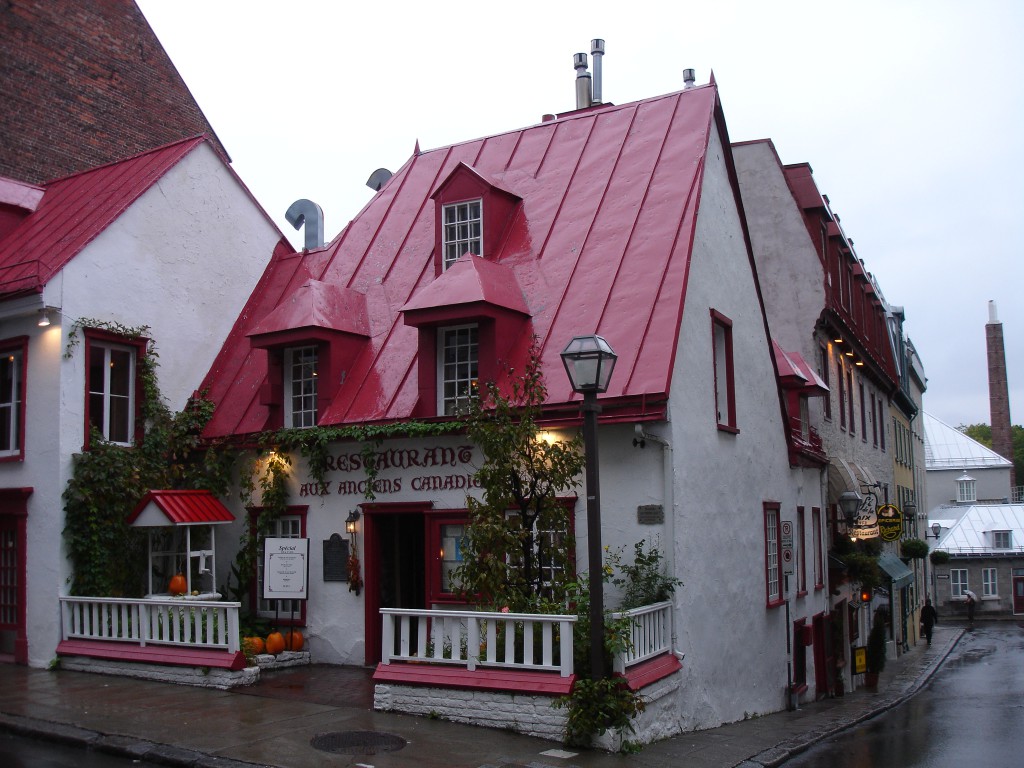
The Breathtaking Château Frontenac
Château Frontenac is definitely the biggest attraction in town. You should take your time exploring this magnificent piece of architecture. Walk around it, up close and from a distance. In both cases you can take it all and take photos of the structure from all sorts of angles. The building has got so many details which you will notice both up close and from a distance. You will also have the opportunity of entering the château where you can observe the wonderful interior which is really classy via the hotel yard which is very impressive as well.
This marvellous structure is operating is a hotel and was built in 1893. It was named after the former governor of the colony of New France, Louis de Buade who was the Count of Frontenac. It’s located at 1 Rue des Carrières on a cape overlooking the Lower Town and the St. Lawrence and St. Charles Rivers. This is also the archaeological site of the Château St. Louis, that was the original location of the French government in North America, where the 1600s Colonial governor conducted the operations stretching from Louisiana to the Great Lakes. It burnt down in 1834 and was not rebuilt until about 60 years later as a part of the original structure of Château Frontenac.

The hotel was initially designed as the stopover for railway travellers. The construction was sparked by general manager for the Canadian Pacific Railway William van Horne and was designed by New York architect Bruce Price in a series of château style hotels for the railway. The hotel is simply stunning in its beauty and is based at an amazing site as the centre piece of the whole city.
The architectural style is reminiscent of the romanticism of the 14th and 15th century castles of the Châteaux of the Loire Valley in France. This is a style of architecture seen along the Loire River where you will see great examples of French Renaissance castles. When creating the original design, Price abandoned the symmetry, which this style was known for, and added more striking eclectic elements of the late 19th century. There are also elements of Scottish Baronial architecture where towers and turrets are incorporated. This style goes back to the 16th century and are featured in medieval castles and French Renaissance châteaux as well
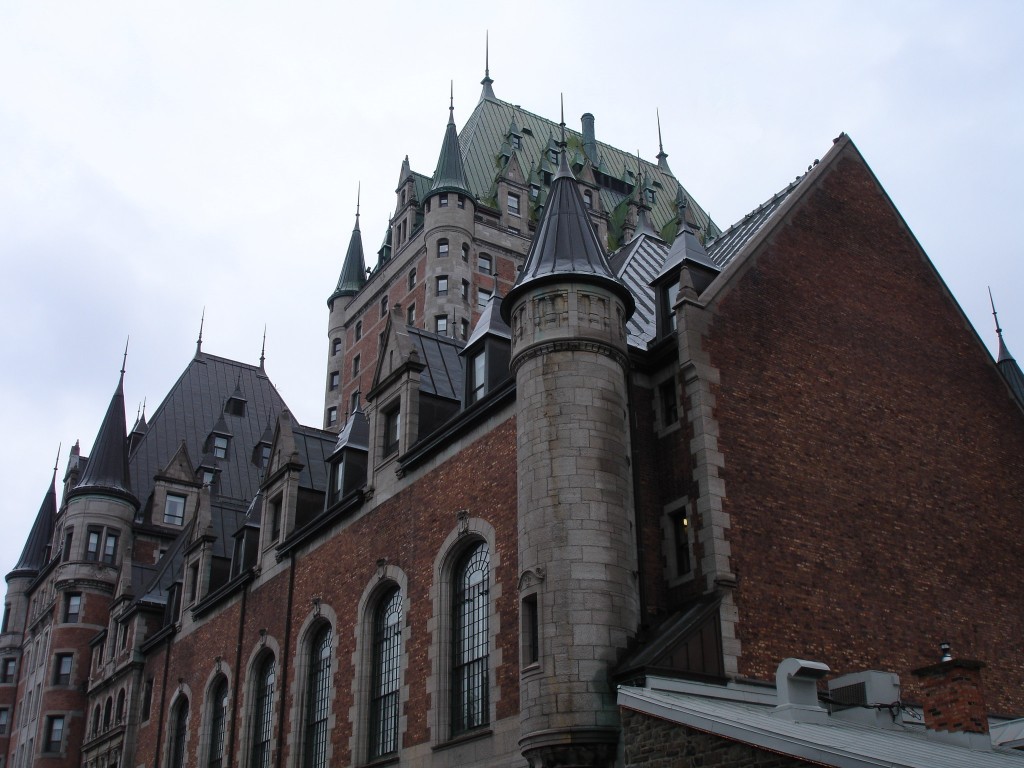
During the late 19th and early 20th century newer additions were constructed such as the central tower in 1924, designed by Canadian architect William Sutherland Maxwell and the later additions by him and others were done with full respect for the original concept.
The Quebec Conference at the Château Frontenac
In 1943 a major historic event took place at the hotel which was the Quebec Conference when US President Franklin D. Roosevelt, British Prime Minister Winston Churchill and partially Canadian Prime Minister Willian Lyon Mackenzie King discussed the strategy for World War II. Churchill suggested that Mackenzie King should have been involved in all discussions but Roosevelt wasn’t interested in that, so the Canadian Prime Minister’s presence was more of a ceremonial purpose.
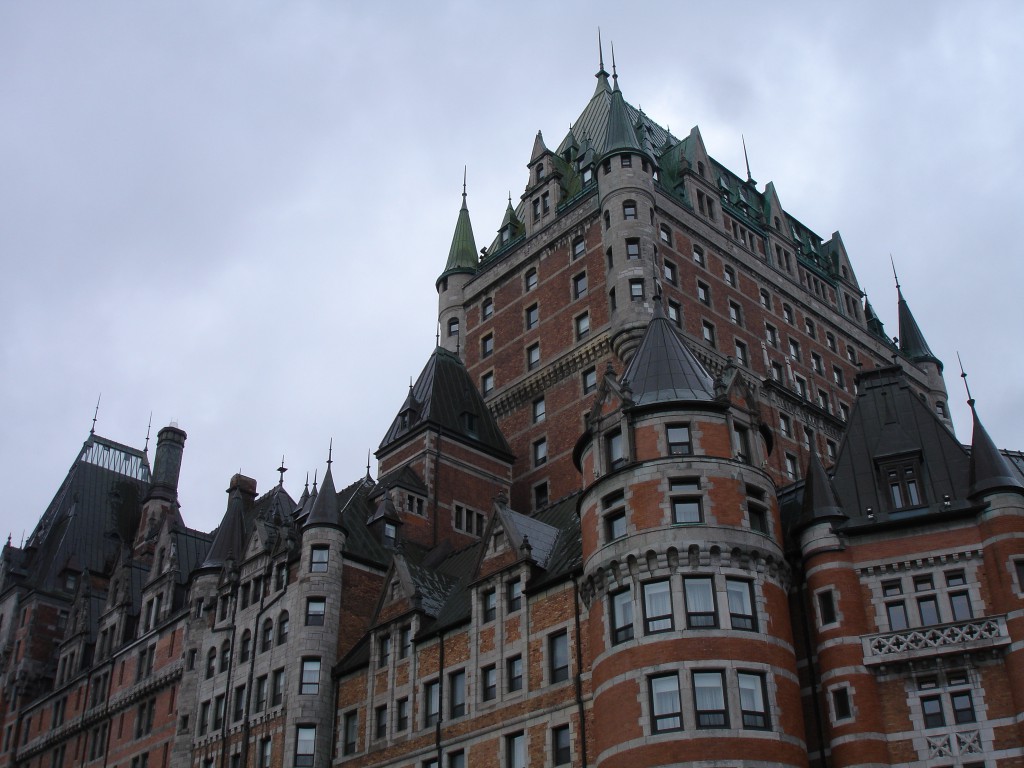
The Americans wanted to step up their game and take charge as they wanted an invasion of France. Churchill had managed to postpone the invasion of France at earlier stages time and time again, but this time it was decided to go ahead as a part of Operation Overlord on 1 May 1944. This date was subsequently neglected and a later date was agreed upon. Another option was discussed as well, which was Operation Jupiter as a plan B to Overlord in case the German resistance would have become too powerful on the French Coast.
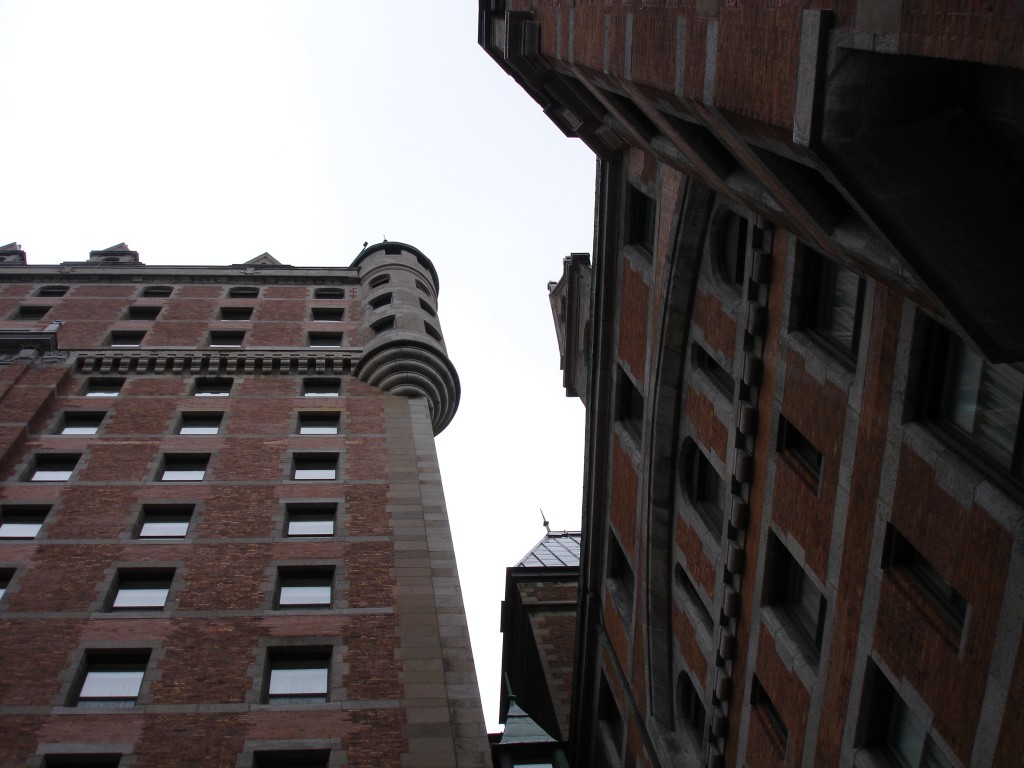
Many different matters were discussed but another major topic was the decision on the coordination of effort of the Americans, British and Canadians with the development of the atomic bomb. Churchill and Roosevelt signed the Quebec Agreement, without any input from the Canadians, stating that nuclear arms would never be used against each other and or against a third party without the consent of one another.
The Marvellous Dufferin Terrace
Take a stroll on Dufferin Terrance which is an extension of the Governor’s Promenade also known as Promenade des Gouveneurs. Here you will have a stunning view of the terrace itself, the Château Frontenac, the Lower Town, the St. Lawrence River and just the picturesque town as a whole. Dufferin Terrace is a wide promenade where you can have a nice and cosy walk and just chill and take the scenery in. You will have plenty of photo opportunities along the way.

You can take some great shots of the Château Frontenac from a distance, where you will be able to get the whole structure into your frame. When you get closer to the hotel you can take some really cool pictures from difference angles of the different awesome details such as the turrets, towers, windows and so on. Furthermore you can take some cool photos of the Lower Town and the river as well.
The Stunning Old Quebec…Upper Town and Lower Town
One of the biggest highlights of Quebec City is the old town as a whole, also known as Old Quebec. There are parts of the city with the original old architecture and other parts are re-built structures of old buildings. This is cool and doesn’t spoil the experience, but you will probably notice that the new buildings are not crooked like the old ones which is one of the many charming details about the old structures. That being said, the re-built structures are charming as well. You will find a lot of old interesting architecture.

Old Quebec is divided into the Upper Town and the Lower Town. Ever since Samuel de Champlain chose the Upper Town as the site for the Fort St. Louis in 1608, it has been the military and administrative part of town. This was based on the strategic favourable location on the cape known as Cap Diamant. After the British conquest the Upper Town was mainly populated by British government officials and the Lower Town was mostly inhabited by Catholic clergy and French and English merchants.
The military presence in Upper Town limited the expansion of town. Therefore, by the end of 19th century, the city demolished some of the fortification which thankfully was stopped by Lord Dufferin who managed to convince officials that its preservation was necessary and it would be possible to adapt Upper Town to a modern lifestyle.
The area began to deteriorate by the 1950s but restoration wasn’t initiated until the 1970s. Upper Town is a very charming part of town with its historic ramparts, gates and buildings. Its heritage and history gives it a lot of character and it’s a magnificent place to take a stroll. You can easily spend a couple of hours here or even days if you want to take you time and take it all in.
Most buildings date back to the 19th century and some even back to the 17th and 18th centuries. You will find the Château Frontenac and the Hôtel de Ville along with many other amazing structures. There are several commercial streets and plenty of opportunity to find accommodation as Old Quebec is the most popular destination in town.
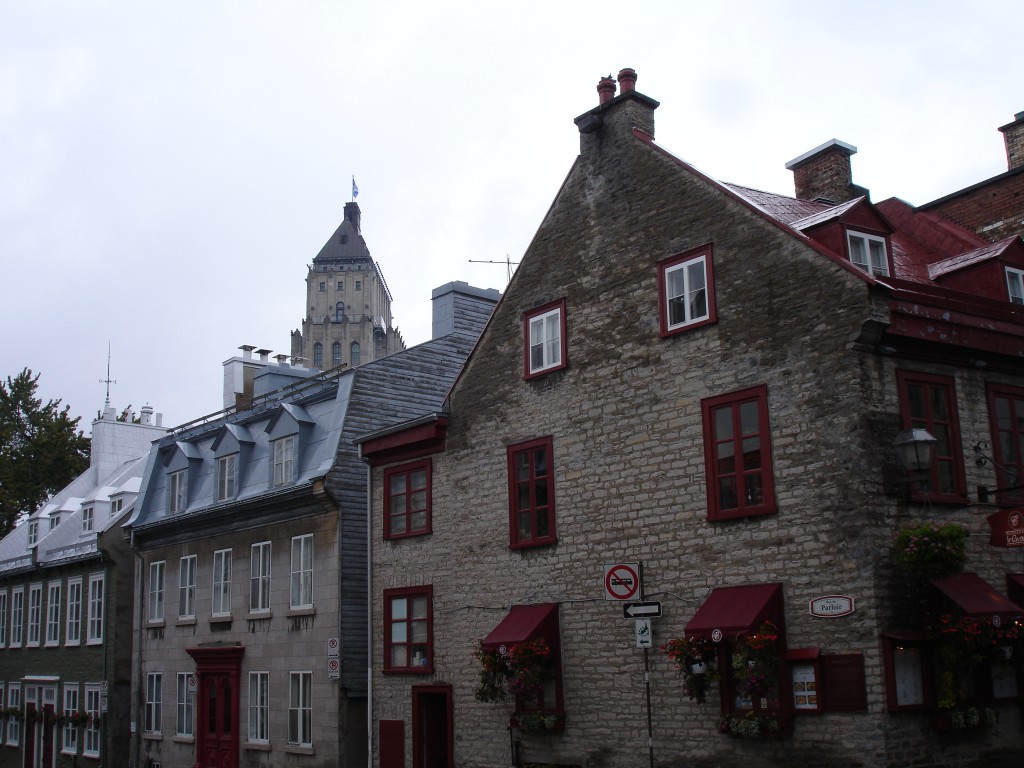
An interesting structure in Upper Town is the tallest building in Old Quebec called Édifice Price or the Price Building. This 18 floor skyscraper was completed in 1931, is 82 metres (269 ft) tall and is located at 65 Rue Sainte-Anne. The building was constructed in the style of Art Deco at the time with ornaments and the classic design with setbacks which not only gives the structure a great visual presence in the skyline but it also reduces the load on the lower floors. The top part has châteauesque elements such as a steepled copper roof along with influence of Beaux-Arts.
Another cool structure is the Musée de l’Amérique francophone located at 2 Côte de la Fabrique in Upper Town. The purpose of the museum is to develop and promote the French culture in North America. It is the oldest museum in town and dates back to 1663 and has undergone several name changes. The building in which is it now housed was constructed in 1838 and was designed by Thomas Baillairgé. It is a beautiful stone building with a rounded façade, silver roofing and fits in well with the surrounding structures.
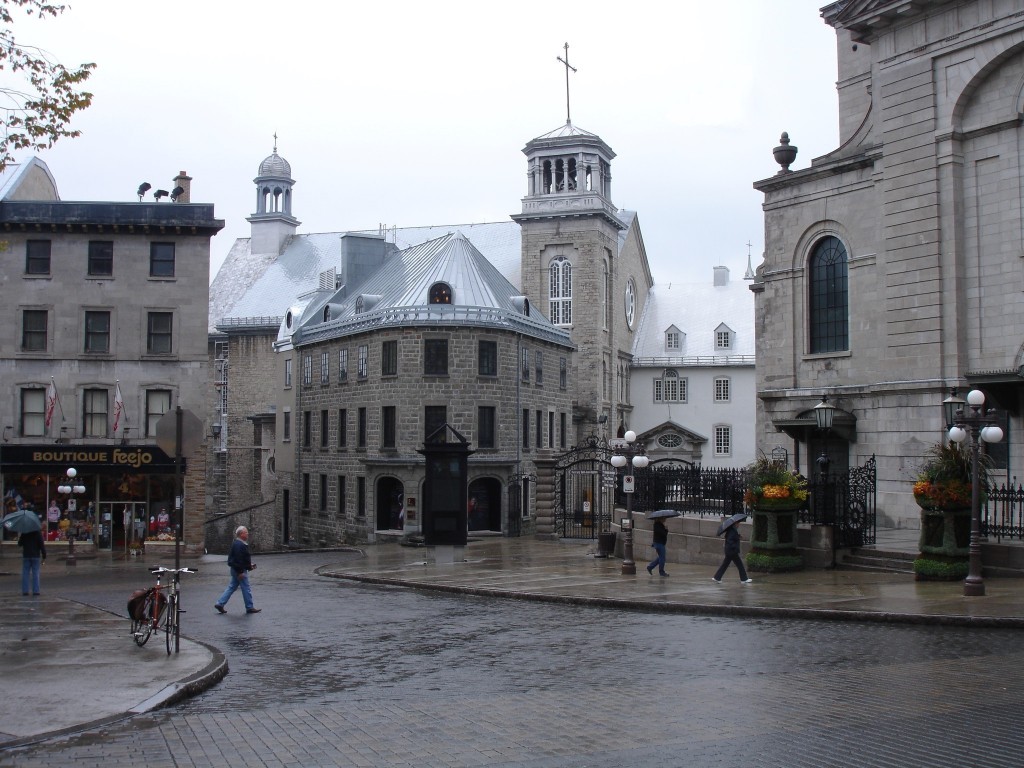
Lower Town is located at the foot of Cap Diamant and is the site of the original settlement. It is based on what used to be Samuel de Champlain’s Habitat de Quebec which was a collection of buildings established in 1608 and served as a fort and dwellings for the new colony in New France.
Lower Town is a fantastic area to go for a walk with its small charming cobblestone streets and the old stone buildings. The setting is really beautiful being tightly squeezed in between the towering rock wall of Upper Town on one side and the St. Lawrence River on the other. There is plenty to see and there is so much history, so a good option could be to join a guided walking tour.
Notre-Dames-des-Victoires is a beautiful little stone church in the style of Colonial French architecture which serves as a centre piece of Lower Town at Place des Petits Pères. It was built on what is known as Champlain’s Habitat. The construction started in 1687 and was completed in 1723.
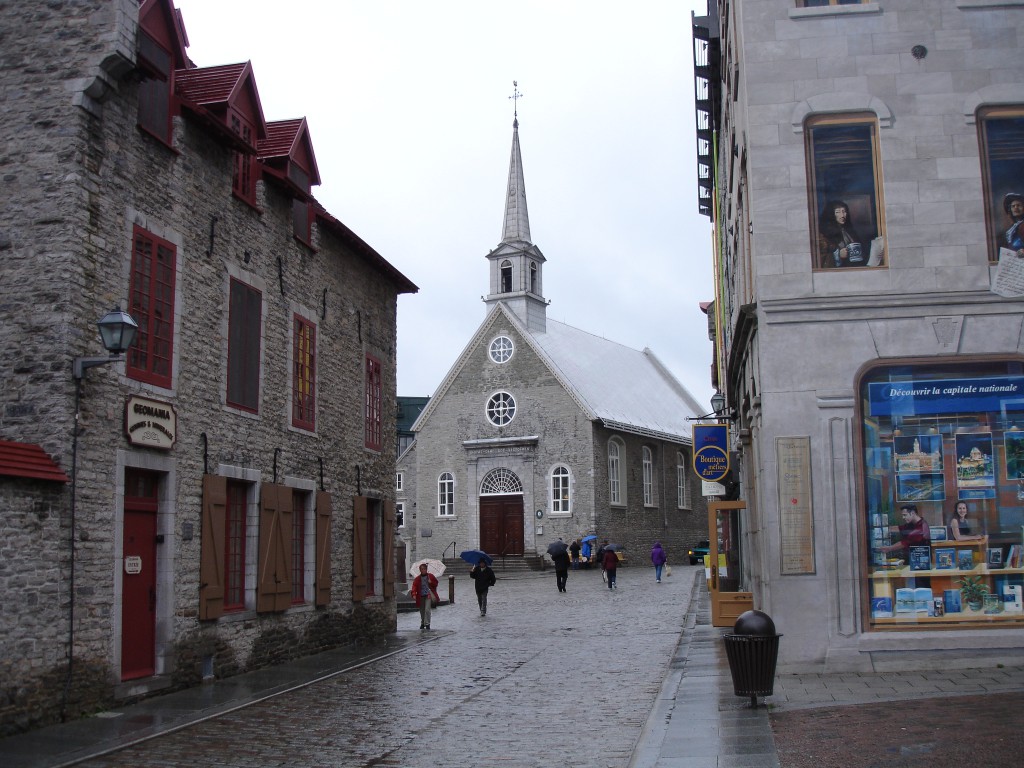
It was named Notre-Dames-de-Victoire (with “victory” in singular) after the British had been defeated at the Battle of Quebec in 1690. The name was changed to its current Notre-Dames-des-Victoires (with “victories” in plural) after a British fleet had sunken after bad weather in 1711. The church was severely damaged during the Battle of the Plains of Abraham in 1759 but was rebuilt again which was completed by 1766. A complete restoration was finished in 1816.
Petit-Champlain is a neighbourhood in Lower Town where you will find charming narrow cobblestone streets, shops, restaurants and architecture of stone buildings. You will also see an impressive mural painted on the side of a building on 102 Rue du Petit-Champlain. Rue du Petit-Champlain is a one lane pedestrian street and is said to be the oldest street in North America. On the mural they have illustrated major events in the history of the district such as the bombardments of 1759, the landslides and the fires.
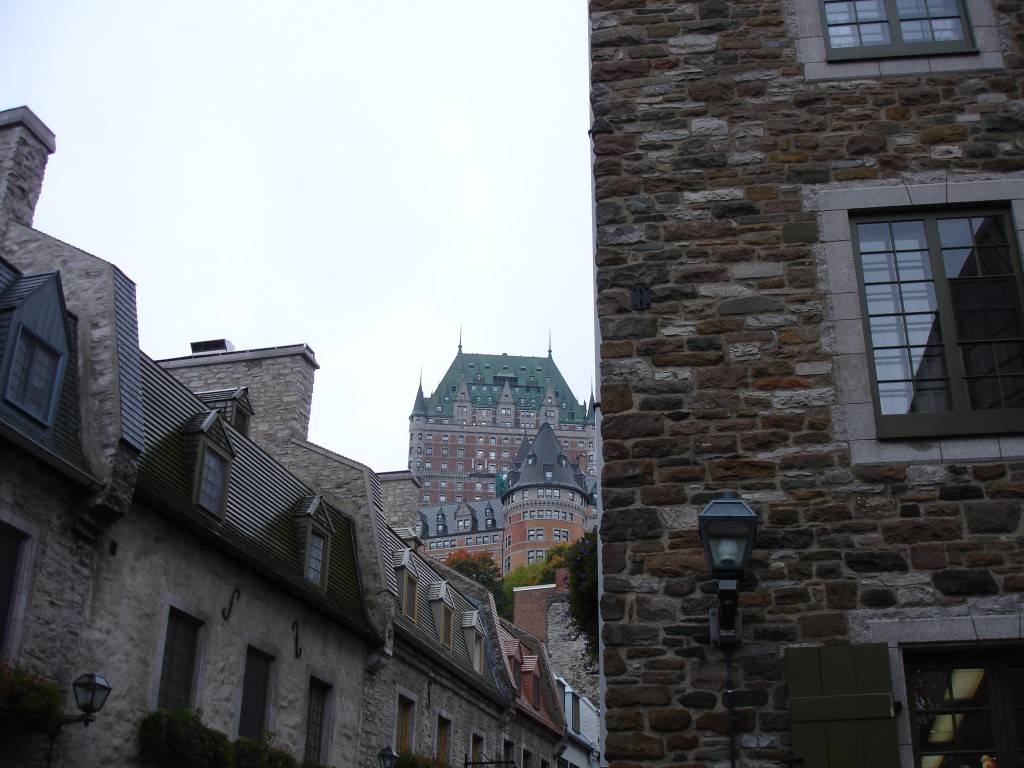
One of the highlights in Petit-Champlain are the Breakneck Stairs which are a flight of steep stairs through a charming alley with building blocks on each side. It’s the oldest stairway in Quebec City dating back to 1635. Another interesting sight to check out is the Funiculaire located at 16 Petit-Champlain. Due to the steep hilly boundary between Upper and Lower Town a cable car was constructed and have been in operation since 1879.
When getting up the steep slope to Upper Town you won’t be too far from Château Frontenac. As a visitor it could be fun to try but walking between the two districts is highly recommended as you will get to see the town from many different angles, and walking is just the best way to explore a city. Both the Funiculaire and the Breakneck Stairs arrive at the intersection of Rue de Petit-Champlain and Rue Sous-le-Fort.
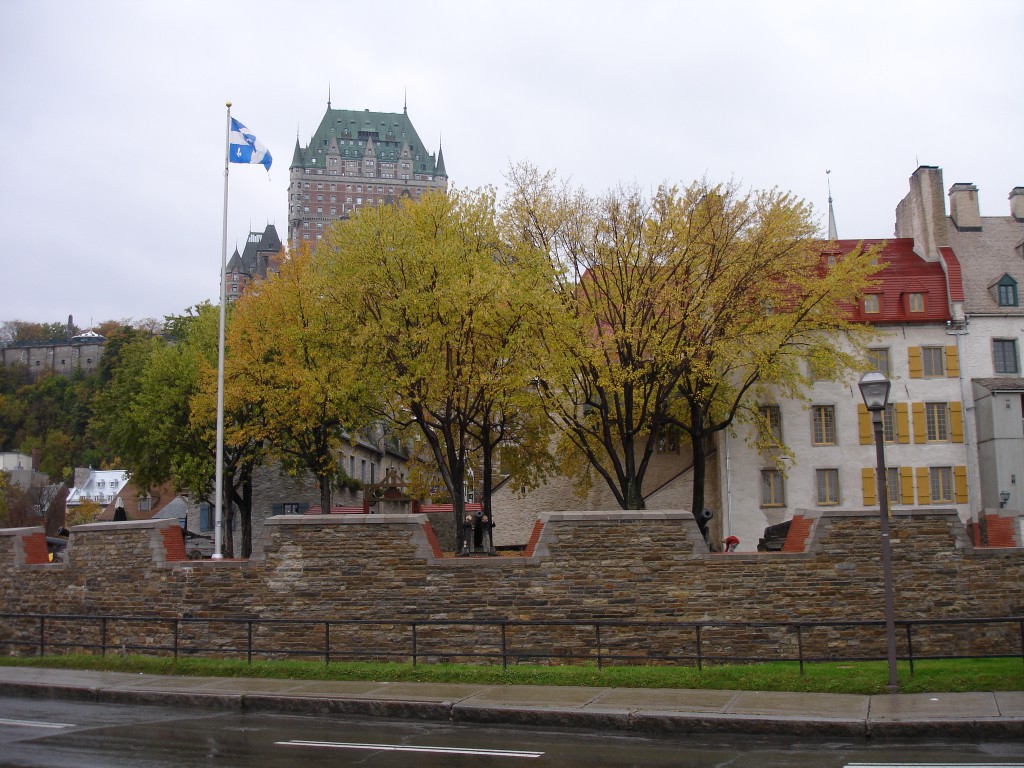
In Lower Town you can get some great shots of the old buildings in Lower Town with the Château Frontenac as the backdrop. Especially if you are in the Petit-Champlin neighbourhood you will have a great opportunity for this. Also if you walk down to Rue Dalhousie, close to the habour, you will have a great photo opportunity of the Château Frontenac with the old block structures of Lower Town fronting the motif.
